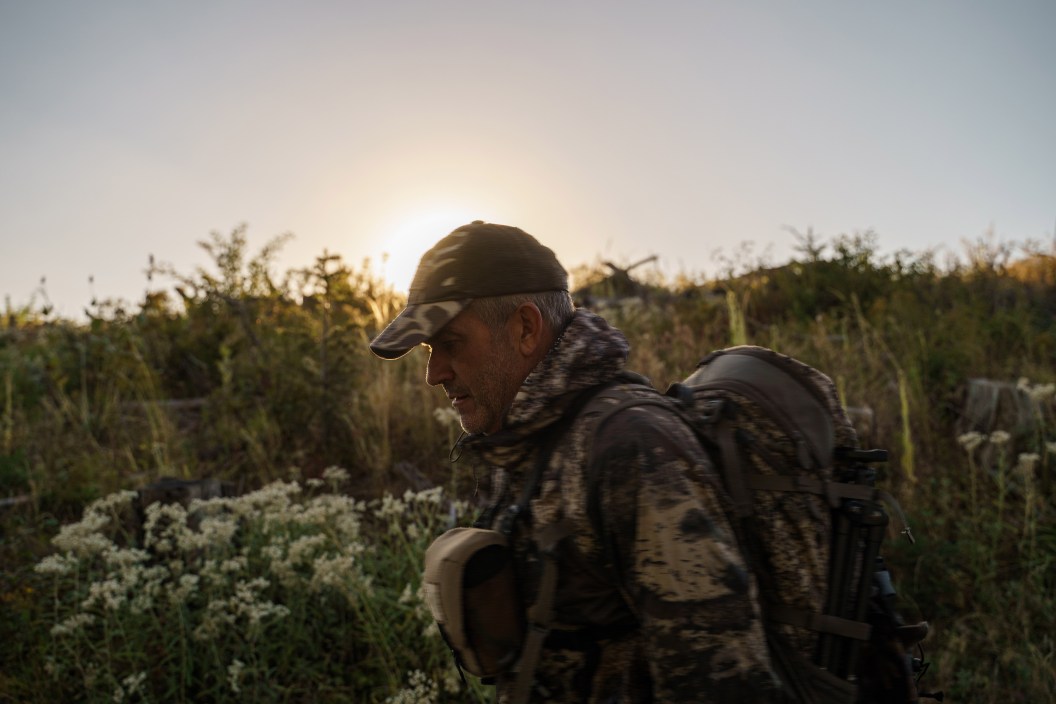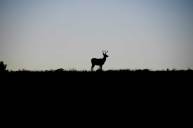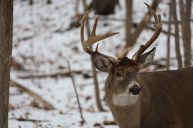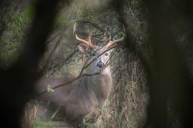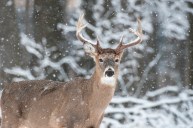You packed your bag, you cleaned your rifle or bow: You're ready for deer hunting season! One of the most important factors for a successful fall hunt, though, is knowing when exactly are the best deer-hunting times to head out.
While different times of year can mean active deer movement at different hours, with the onset of autumn, whitetail deer begin the cycle of breeding that we all know as the deer rut. In the northern states, whitetails breed exuberantly in October and November, even into the early winter. Moon phases come into play, particularly a full moon, a waxing moon, and a waning moon (first quarter and last quarter, respectively).
Still, because we can only hunt during the daylight hours, we have to ask ourselves: When do deer commonly move in a typical setting in September and October for bow season, and November into January for firearms season?
A big part of knowing when and why deer move through an area is sometimes the most important of the season. Your state's wildlife commission chooses the season dates because deer activity is at a fever pitch in the fall, whether you are in Florida, North Carolina, or New York. Taking deer during the whitetail rut is one of the best ways to control the herd's population, simply because they are breeding and are quite preoccupied at that time.
Best Time of the Year To Deer Hunt
Certainly, every state that provides a whitetail hunting season for its resident and non-resident hunting community has season dates that cover the best possible dates for maximum success rates. And for most deer hunters, the answer to when is the best time of year might be "whenever I can get out there!"—and they wouldn't be wrong.
But whitetail deer have an internal clock that goes off when the days become shorter and the nights become cooler. They feed more regularly wherever crops grow before the harvest. Their movement patterns range from fairly typical—using familiar trails and bedding areas—to less predictable as the season continues.
In other words, the time of day you stand to see the best success still depends on the time of year or the seasonal progression you're in.
Statistically speaking, the time between the full Hunter's Moon in late October and the peak of the whitetail rut in late November is when most deer are harvested.
The whitetail rut, which starts when the days grow shorter and the air grows chillier around the end of September in more southerly states and in mid-October in northern zones, is the prime time to hunt deer on terms that are of the most benefit to the hunters.
That said, many hunters fill their tags long before and sometimes long after the peak of the rut in late November. Many hunters—especially bow hunters—feel that once the leaves begin to fall or are completely gone, that is the best time to be on stand waiting for deer movement.
Solunar calendar tables have a well-deserved place as a tool for sportsmen and women, whether we're in the woods or on the water. Deer feeding times may vary based on food availability. They vary even during the peak of the rut, as bucks begin to pursue the does. This time of year, does have to try and grab a mouthful of food, all while being chased down relentlessly.
Once the hunting season has started, deer movement will change based on the hunting pressure and even the barometer, as stable barometric pressure between 29.70 and 30.30 can really have deer moving, especially big bucks. Deer hunters should understand the hunting hours they spend in their treestands now have major and minor movement times. This is the foundation of when and even whether you should be in the woods.
The best hunting times for big game hunters, especially whitetail deer hunters, are rather obvious, but can still change like the wind once the pressure is on. We know all about scent control, wind direction, movement, sound control, and camouflage. Still, nothing matters when you're on the stand and nothing is coming your way, even during the early season.
The Best Time of Day to Hunt
1. First Light
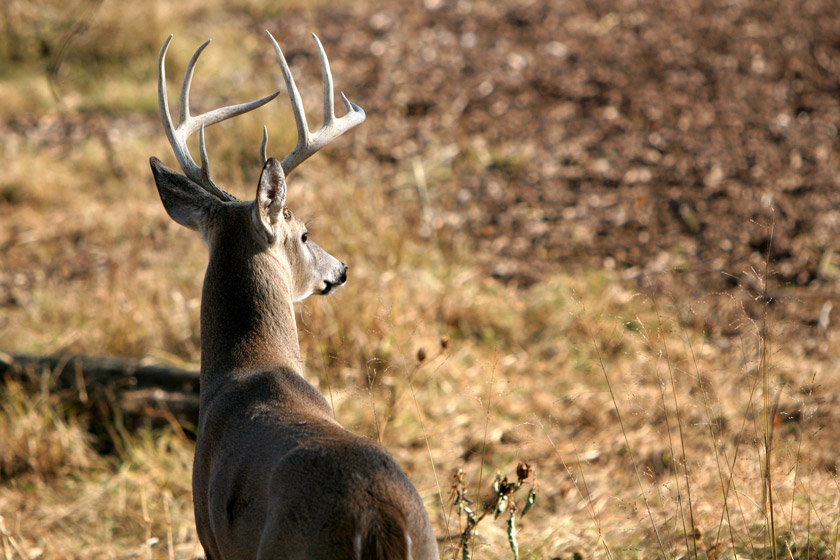
This is arguably the best time of the day to hunt deer overall. While deer aren't actually nocturnal, some that have been feeding overnight—whether in farm fields or on natural foods like tree nuts—are now trying to make it to bedding or other safe areas before it gets too light. Taking into account that the early morning sunlight can hide your movement and position (you got into your stand before daylight, right?), deer can't pick you out unless you've left too much scent in the air.
The early plan in any hunting season is to be in our stand well before daylight to ambush deer moving out of feeding areas and into bedding areas, especially on public land. As the season moves into full swing, deer that haven't been pushed too much tend to use familiar routes. But that's if they haven't encountered any hunting pressure yet, even if it's just a smell, movement, or sound they don't like.
Once this happens, deer will be much more aware of their surroundings and will only move in a slower, much more discrete fashion. A feeding deer will seemingly play games with us, lifting their heads at indiscriminate moments to try and get you to move or make a sound. Deer are constantly on the alert. Even though virtually everything begins to come alive and move at first light, the whitetail knows what should be there and what shouldn't.
The trickiest part of successful first-light hunting is getting to the specific location. If you can move stealthily while hunting (and in the dark), you increase your chances. You might consider alternate options if that's harder to do without getting busted.
2. Mid-Morning
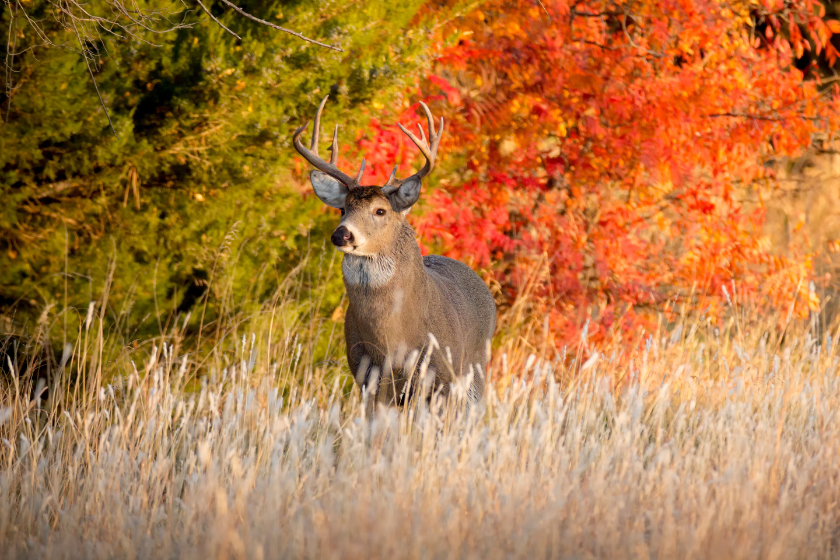
Getty Images, ricardoreitmeyer
This is conceivably the second-best time of the day to hunt because many deer have begun to get off of their beds and move again. Another good reason this is a great time to be on high alert is the movement of other hunters who just can't stay put for one reason or another.
This is a paramount hunting time for any serious deer hunter. I've probably shot more deer in my life mid-morning than at any other time in my hunting career. Most of them are specifically between 9 and 10 in the morning, to be exact.
It's a proven time, and it could have a lot to do with the common perception among deer hunters that things slow down once early morning is through. Hunters head home for a mid-morning nap or an early lunch, and in many situations, this can open things up for the hardy ones who stay on stand. It's also a productive time for deer movement that's not worth sabotaging.
If you need to survey land, scout a specific site, or do some non-hunting activity, don't do it during the mid-morning. Bucks are ramping up the chase by mid-October (in northern climates), antler sparring is happening, and the does are on high alert. Wandering in the woods to check a trail camera or look for signs at this time of the day can leave you exposed to deer. A mature buck may not return to the area after spotting you.
3. Midday
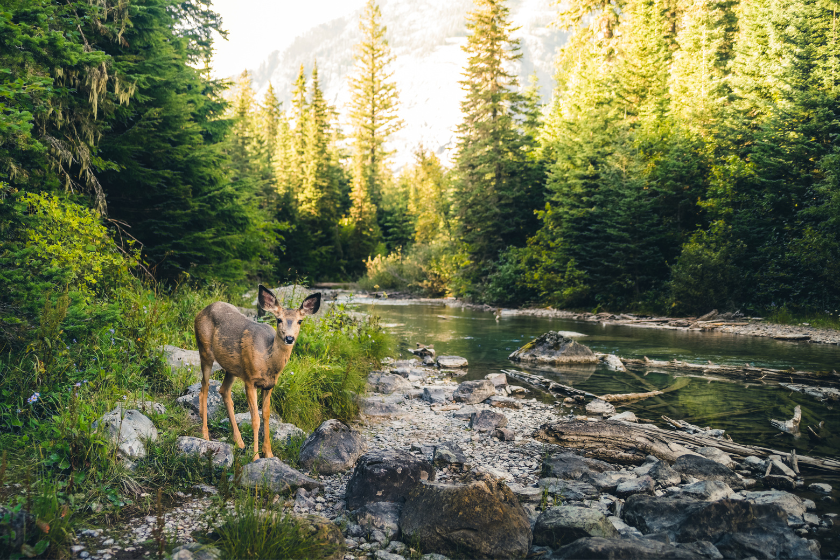
Getty Images, RyanTangPhoto
Around noon is an underrated time of the day to hunt, particularly to target mature bucks. Anyone who's been checking their trail cameras throughout the season has eventually found pictures or video of a buck at that time, sometimes running away from the scouting hunter who thought that waiting until noon was a good time to check his or her camera.
It's said that even mature bucks will move readily at midday, and many good deer hunters would agree. But bucks act as individuals, and everyone is different. Because deer are crepuscular (i.e., most active during dawn and dusk), you may think that noon or thereabouts might not be the right time for finding one on its feet. According to many, you would be wrong.
Breeding season is the great equalizer. Studies have shown that a buck's home range size is highly variable and is not firmly correlated to age. So daily movements are based on traits found in all age classes of male deer.
This means that even older deer will chase during the rut, find a bedding area to rest, and then rise to move again after a short time. As deer season moves forward, look to your calendar for the next new moon. Deer cannot use the cover of darkness as well to find food or move around. This creates a need for even rutting deer to stop and rest during the night, meaning they'll be more likely to move during the sunlight to chase does.
4. Late Afternoon
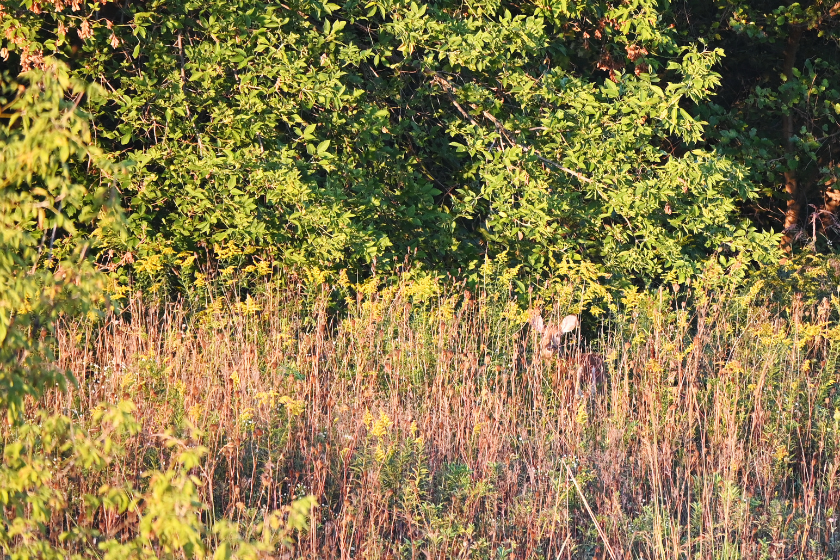
Getty Images, steverts
Late-afternoon deer hunting can be a challenge because crepuscular deer want to move simply out of acting normally, but with the waning light it can be difficult to target a deer, let alone track it (especially on public land). While some may argue, this is likely the least profitable time of the day to hunt deer.
Because deer are active during the twilight hours around dusk and dawn, it's no surprise that we see them move at the end of the day. By planning to hunt for the entire day—packing plenty of food and drink—we can still be there at the end of the day when many hunters have given up.
Whitetail hunting videos often show the hunter shooting a buck right at the last minute of light. Either it's "movie magic," or hunting the last light is legitimately a good way for many hunters to fill their tags.
A treestand set up on a trail that leads to an afternoon food source can keep deer in your sight until it is too dark to see. Play the wind right, and you'll be on your way to finding success. Setting up 50 to 75 yards away during bow season may have a buck walk right by you, even one that tends not to follow other deer on the same trail closely. During firearms season, the same stand could be 100 yards away from the same path and still give you a shot.
Stand Locations and Timing
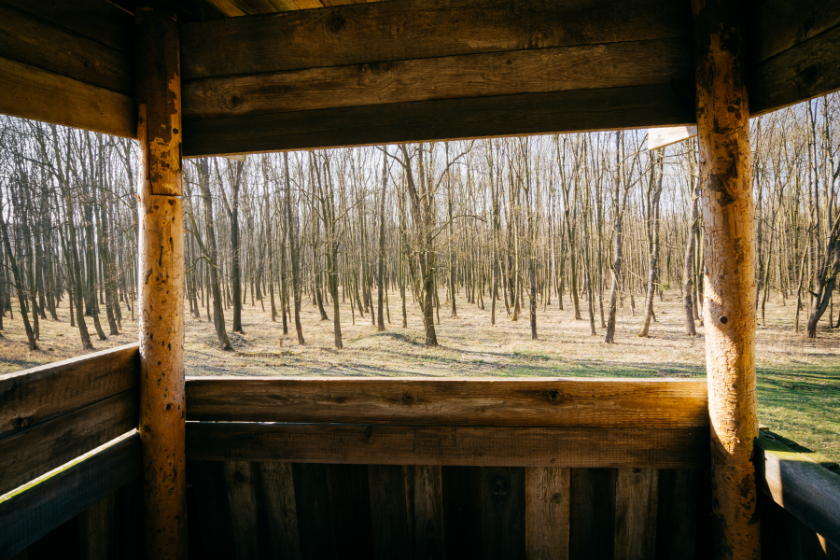
Getty Images, altocumulus
The correct evening treestand location is not always the proper morning stand location, and vice versa. The same stand can often be an excellent midday cruising area for bucks searching for doe bedding areas adjacent to food sources.
As the rut progresses, bucks no longer search for food as much as they search for does that have become estrous. The difference? They're still actively feeding and attempting to use the same areas they've been using all summer.
Three things cause a doe to change her habits: breeding, weather conditions, and hunting pressure. The latter is the most critical factor.
That leads us to timing: We try to get to our favorite stands under cover of darkness to defeat some of our quarry's senses—sight, sound, and, most importantly, smell (certainly during the whitetail rut). Because we all believe in scent control, that should be a given.
We can do other things to tip the scales in our favor and make a difference. Many deer hunters use the method of only leaving an evening stand when it's dark and using the late hour to get out of the woods. By hiding their motion and sound under the darkening skies, they're lessening their chances of ruining the spot. The bottom line is that you can be in your tree before sunrise, but you should be on the ground just after sunset and walk out the same way that you walked in: quietly.
Whether on private land or public, hunting with a bow or during the muzzleloader season, timing is everything. We deer hunters love to sweat the details. Understanding when and where the deer will be and getting ahead of them is where the real hunt begins. It's integral to putting meat in the freezer and antlers on the wall.
Your Questions, Answered
The best deer hunting times can vary for anyone based on many of the factors listed here, but generally speaking, the first hour of daylight on any given day seems to be the overall choice of veteran deer hunters. This is due simply to the fact that deer movement is high at this time and most deer hunters will agree that they've taken a deer first thing in the morning more than once in their lives.
Many times it is when the barometer hits around the 30.00 point thanks to high-pressure stability. Other factors include just before a cold front moves through your area as deer seem obliged to get up and feed before inclement weather arrives.
Significant changes in the temperature—either up or down—can get deer moving, but any time that the air temps are very high deer won't move nearly as much. As far as the best temperature goes, whitetail deer like it on the cool side so anything around 40 degrees or less can really get them moving.
Still hunting for deer is at its best during those times when the deer have concluded some of their own movement but are preparing to get on their feet again. In this way, the hunter can quietly stalk through likely deer-holding areas, but not spook them off of their beds before the hunter can get a shot.
